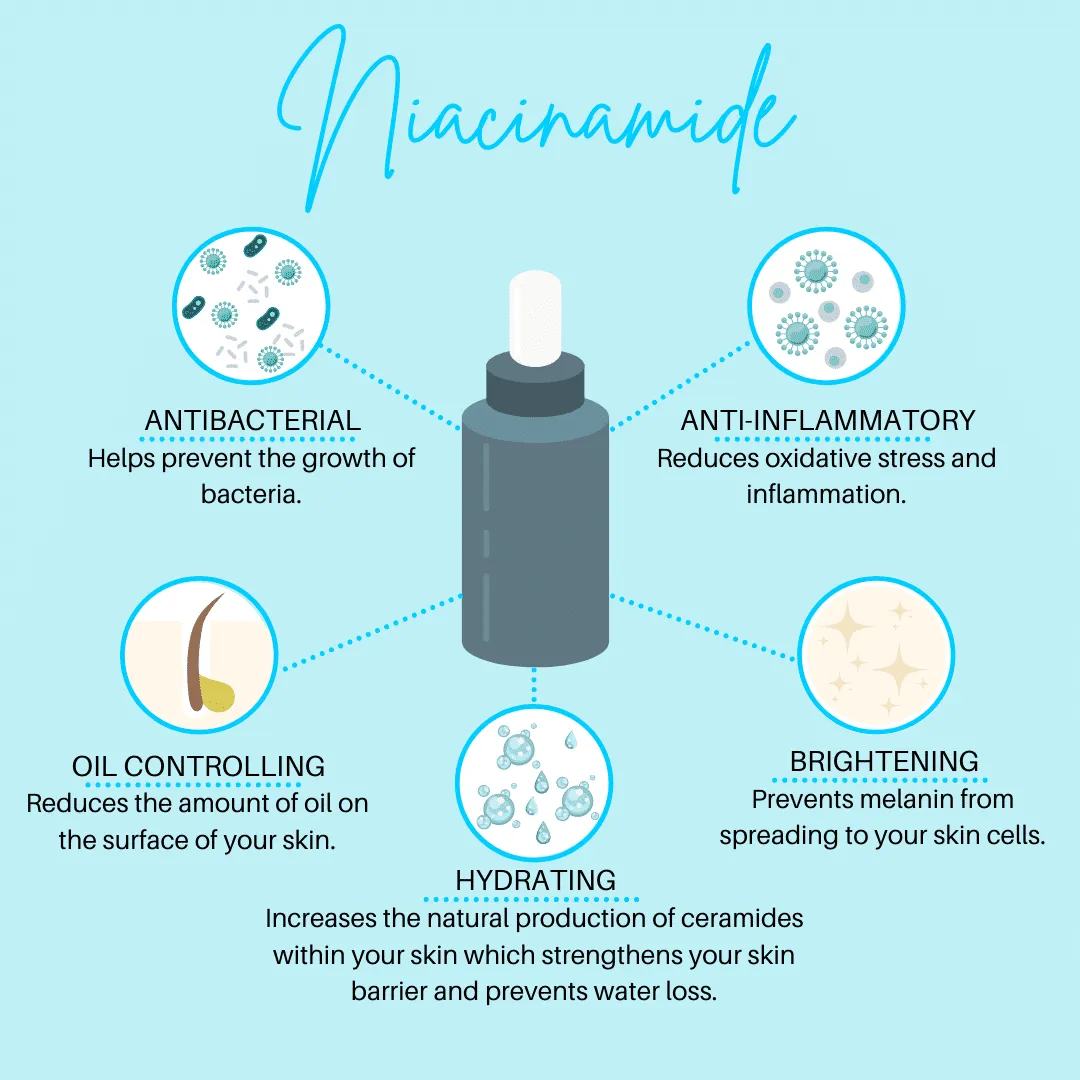
What not to use with niacinamide
Share
Niacinamide, also known as vitamin B3, is a versatile skincare ingredient much appreciated in the world of cosmetics. It is renowned for benefits such ashelping to reduce dark spots, regulate sebum production and strengthen the skin barrier. What's more, niacinamide can be used morning and night, and is suitable for all skin types, including sensitive and dry skin. However, as with any cosmetic active ingredient, it is essential to know which products to avoid combining with this ingredient to preserve its benefits and avoid undesirable effects.
The benefits of niacinamide in a skincare routine
Before exploring incompatibilities, let's recall the impressive properties of niacinamide. This active ingredient plays a key role in a skincare routine, helping to maintain healthy skin by stimulating the production of ceramides, lipids essential for protecting and moisturizing the skin. It also acts as a powerful anti-inflammatory, ideal for skin prone to redness or acne.
Niacinamide is known for its many benefits:
- It gently exfoliates, removing dead cells.
- It moisturizes dry skin and regulates excess sebum on oily skin.
- It brightens the complexion and reduces dark spots.
- It improves skin elasticity and reduces irritation on sensitive skin.
Thanks to its high tolerance, it is commonly incorporated into day creams, serums or moisturizers to be applied in the morning or evening.

Products to avoid with niacinamide
Despite its many benefits, niacinamide is a sensitive ingredient in certain combinations. The two main categories to avoid are :
1. Products rich in exfoliating acids:
Acids, such as glycolic acid and salicylic acid, are popular for their ability to exfoliate and treat blemishes. However, their acidic pH can compromise the effectiveness of niacinamide. Niacinamide works best in a neutral or slightly acidic environment. When applied together, there can be a risk of irritation, particularly for sensitive skin, as well as a reduction in the benefits of both ingredients.
- What to do If you want to use both an exfoliating acid and niacinamide in your skincare routine, apply them at different times (for example, use glycolic acid at night and niacinamide in the morning) or apply in succession, for example, salicylic acid as a cleanser and niacinamide as a serum.
2. Vitamin C in its acid form :
Niacinamide is often poorly combined with vitamin C, particularly in its ascorbic acid form, one of the most unstable forms of vitamin C. The combination of these two active ingredients could lead to a degradation of their properties and potentially irritate sensitive skin.
- What to do? If you're using vitamin C to lighten the complexion or treat dark spots, alternate applications: one in the morning and the other in the evening.
How can niacinamide be incorporated into your skincare routine?
To make the most of this ingredient without compromising its effectiveness:
- Apply niacinamide to clean skin after cleansing and before day or night cream.
- Follow a logical order in your care routine, avoiding inappropriate associations such as those mentioned above.
- If you have sensitive skin, introduce niacinamide gradually into your routine to minimize the risk of irritation.
In conclusion
Niacinamide is known as a gentle and effective ingredient, suitable for all skin types, from dry to oily. However, it's essential to know which products to avoid, especially exfoliating acids such as salicylic acid and glycolic acid, as well as vitamin C acid. With these precautions in mind, niacinamide can be used safely, morning and night, for optimum results.
Incorporate this precious vitamin B3 into your skincare routine and take advantage of its benefits to strengthen the skin barrier, brighten your complexion and improve your skin's overall health!

